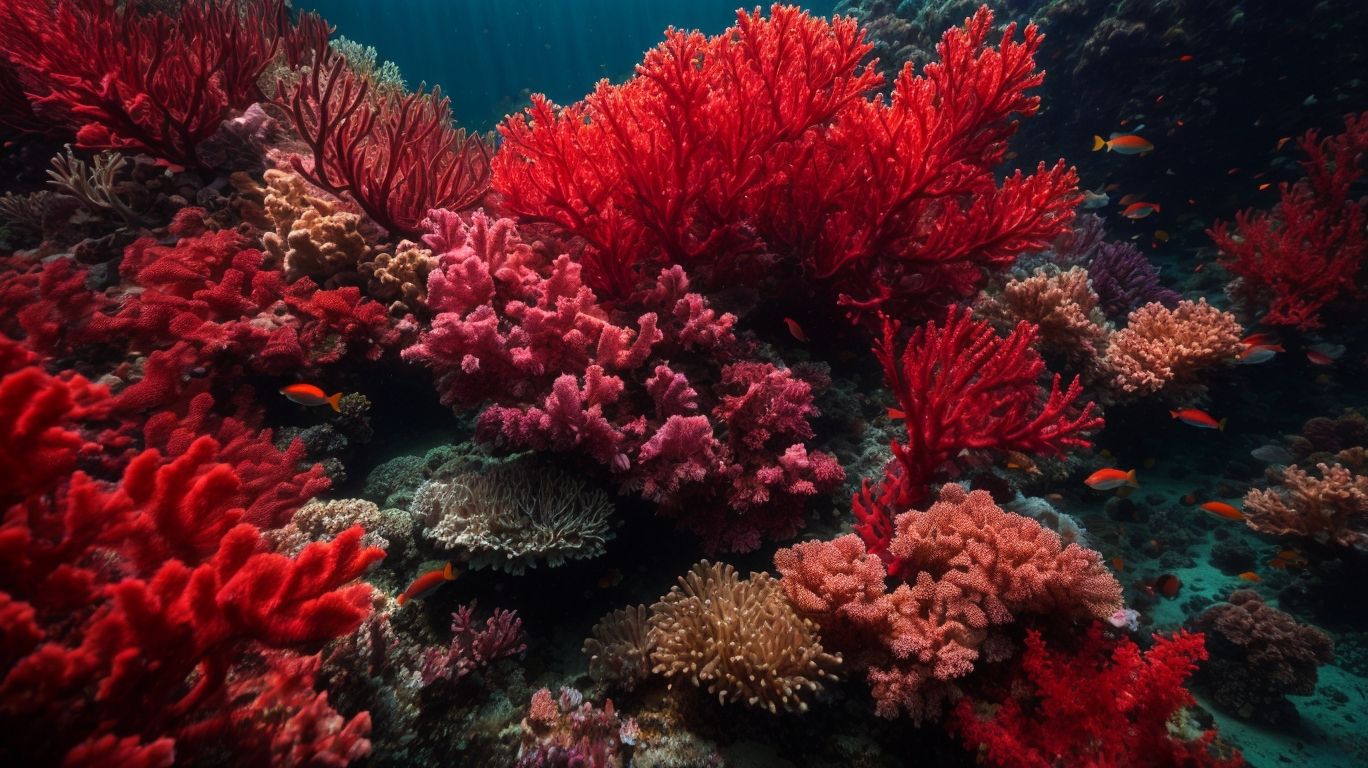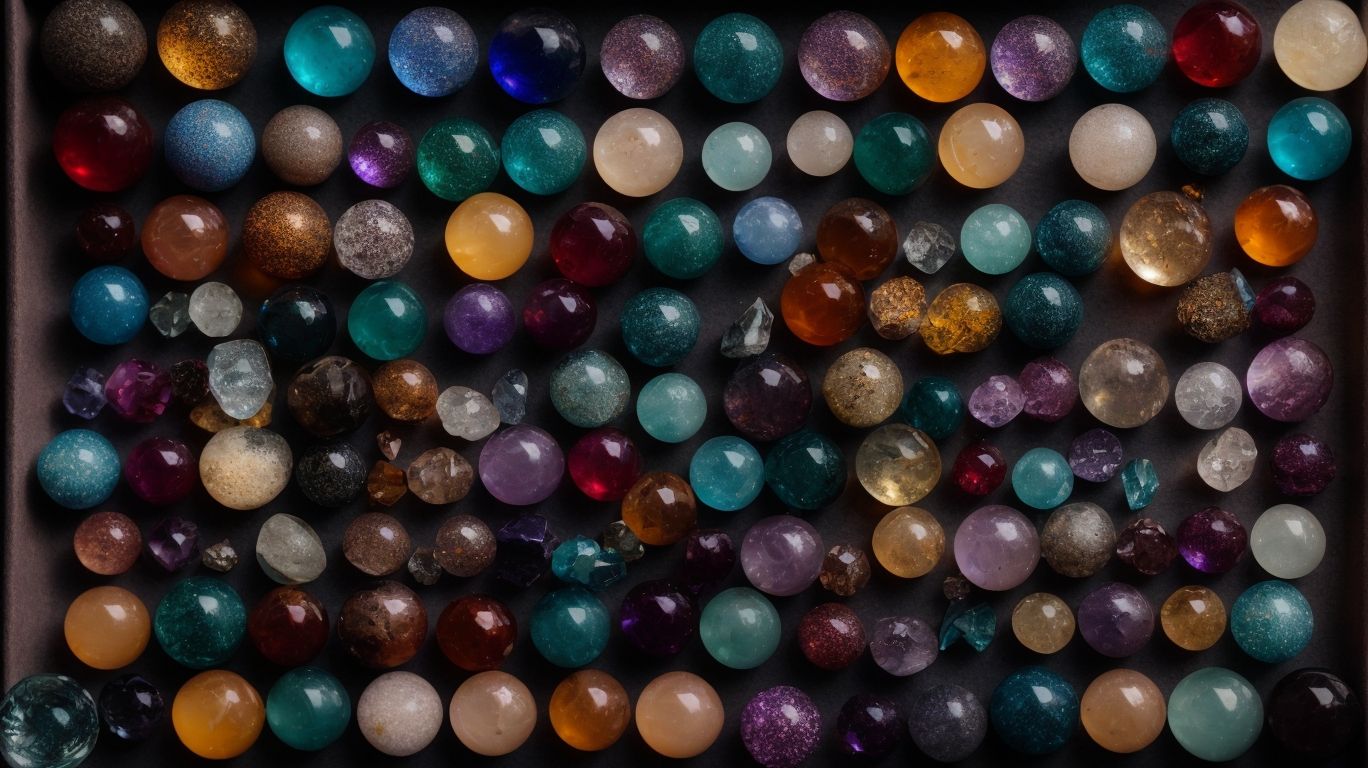
Coral’s Oceanic Charm: Exploring the Depths of Red Coral Crystal
Coral’s Oceanic Charm: Exploring the Depths of Red Coral Crystal
Welcome to the fascinating world of red coral crystal! In this comprehensive article, we will delve into the captivating realm of red coral crystal, uncovering its origins, different types, physical and metaphysical properties, and its significance in the art of jewelry making. Whether you are a crystal enthusiast, a jewelry designer, or simply intrigued by the allure of natural gemstones, this insightful exploration will undoubtedly pique your curiosity and provide you with valuable insights into the captivating red coral crystal. So, join us as we embark on a journey to unravel the secrets and wonders of this mesmerizing marine treasure.
What Is Red Coral Crystal?
Red Coral Crystal, also known as precious coral, is a marine gemstone formed from the exoskeleton of coral polyps, known for its oceanic charm and stunning red hue.
This natural wonder grows in the depths of marine habitats, typically in dark, secluded areas with minimal sunlight, where the conditions are conducive to its development. The formation process involves a slow accumulation of calcium carbonate, creating intricate structures that contribute to its unique allure. Its connection to the sea underscores the beauty of the underwater world, making it a prized gemstone with a deep-rooted association with marine life.
Where Is Red Coral Crystal Found?
Red Coral Crystal is primarily found in the depths of the ocean, thriving in marine environments where it contributes to the oceanic wonders and supports coral ecosystems.
It prefers deep, dark waters, typically found on rocky seabeds or in crevices, ranging from 10 to 300 meters deep. Its presence is integral to the preservation of coral reefs, providing a natural habitat for diverse marine life. The symbiotic relationship between red coral and its surroundings enhances the overall resilience of the coral ecosystems, playing a crucial role in maintaining the intricate balance within these underwater marvels.
What Are The Different Types Of Red Coral Crystal?
Red Coral Crystal exists in various types, including precious red coral, common red coral, and black red coral, each contributing to the oceanic preservation and embodying sustainable practices.
Precious red coral, with its rich, vibrant hue, is highly valued for its rarity and beauty, while common red coral, with its more subdued tone, is more readily available. Black red coral, also known as bamboo coral, is distinguished by its unique black coloration and is often used in jewelry.
These distinct types of red coral crystals play a crucial role in supporting the underwater ecosystem by providing habitats for marine life and promoting sustainable harvesting practices to ensure the longevity of coral populations in the oceans.
Precious Red Coral
Precious red coral, a sought-after variety of red coral crystal, is highly valued in the jewelry industry for its vibrant color and is often sustainably sourced to maintain its availability for future generations.
This beautiful gemstone holds cultural and symbolic significance, making it a popular choice for statement pieces and traditional jewelry. The sustainable sourcing practices of red coral promote ethical and environmentally friendly production methods, aligning with the growing emphasis on sustainable fashion.
With its rich history and visual appeal, red coral continues to inspire designers and wearers alike, adding a touch of elegance and timelessness to modern jewelry creations.
Common Red Coral
Common red coral, a prevalent variant of red coral crystal, contributes to the preservation of marine biodiversity and is harvested using sustainable practices to minimize its impact on marine ecosystems.
This coral species plays a vital role in providing habitat and refuge for a diverse array of marine organisms, including fish, invertebrates, and other invertebrates, thus supporting the overall health and balance of marine ecosystems. Its sustainable harvesting involves measures such as selective harvesting, a regulated quota system, and the promotion of ethical trading practices, ensuring that the coral reefs and their inhabitants are not unduly disturbed or damaged. Such efforts contribute significantly to marine conservation and the long-term sustainability of coral populations.
Black Red Coral
Black red coral, known for its distinctive appearance, plays a crucial role in coral conservation efforts and contributes to marine protection initiatives, reflecting its significance in preserving marine habitats.
This unique species of coral is characterized by its deep black or dark red coloration, which sets it apart from other coral varieties. Its slow growth rate and delicate nature make it particularly vulnerable to environmental changes, highlighting the importance of targeted conservation efforts.
Black red coral also serves as a valuable indicator of the overall health of coral reef ecosystems, acting as a barometer for the impact of human activities and natural disturbances. Consequently, protecting and preserving black red coral is integral to maintaining a balanced marine environment.
What Are The Physical Properties Of Red Coral Crystal?
Red Coral Crystal exhibits remarkable properties, including its vibrant color and luster, exceptional hardness and durability, making it one of the oceanic treasures cherished for its enduring beauty.
Its vibrant red color, reminiscent of the deep-sea treasures, enhances its allure. The luster of red coral crystal reflects the shimmering essence of the ocean, adding a captivating elegance to any jewelry piece. Its remarkable hardness and durability allow it to withstand the test of time, symbolic of the enduring strength found within the depths of the sea.
Embraced for centuries as a prized oceanic gem, red coral crystal continues to fascinate with its natural beauty and resilience.
Color And Luster
The color and luster of red coral crystal are a testament to the marine environment it forms in, showcasing its natural beauty and the unique characteristics it assimilates from its oceanic habitat.
The vibrant red hue of coral mimics the rich tones of deep-sea landscapes, reflecting the intricate beauty of the underwater world. The glossy sheen of the coral’s surface captures the iridescence of ocean waves, evoking a sense of fluidity and movement. As light filters through the water, it illuminates the coral, creating a mesmerizing spectacle that mirrors the captivating allure of the marine ecosystem. These stunning qualities make red coral crystals a captivating representation of the natural environment, seamlessly intertwined with the wonders of the sea.
Hardness And Durability
The exceptional hardness and durability of red coral crystal contribute to the resilience of marine ecology and exemplify the principles of ocean conservation, reflecting its significance in preserving marine habitats.
Red coral’s robust structure makes it resistant to environmental stresses and lends support to various marine organisms by providing stable habitats. This resilience aids in maintaining the delicate balance of marine ecosystems, supporting the interconnected web of aquatic life.
Its enduring nature allows for sustainable harvesting practices, aligning with the sustainability efforts essential for preserving the ocean’s biodiversity and maintaining healthy marine environments.
Transparency And Clarity
The transparency and clarity of red coral crystal symbolize the purity of the marine life it supports, embodying sustainable practices and reflecting its role in the conservation of marine ecosystems.
This precious gemstone not only captures the essence of the ocean’s beauty but also highlights the delicate balance of marine ecosystems. Red coral’s sustainable harvesting methods ensure the preservation of coral reefs and the protection of marine biodiversity. Its connection to the underwater world fosters an appreciation for the interconnectedness of all living organisms, promoting sustainable practices that benefit both the marine environment and our planet as a whole.
What Are The Metaphysical Properties Of Red Coral Crystal?
Red Coral Crystal is revered for its metaphysical properties, offering healing and health benefits, spiritual and emotional upliftment, and exemplifying the principles of coral preservation.
This vibrant crystal is believed to invigorate the life force energy within the body, promoting vitality and well-being. Its connection to the ocean also symbolizes adaptability and strength during times of emotional turbulence.
Red coral crystal is said to stimulate the base chakra, aiding in grounding and stabilizing emotions. Its use in jewelry and meditation is thought to enhance one’s connection to the natural world and reinforce a sense of harmony and balance.
Healing And Health Benefits
Red Coral Crystal is associated with numerous healing and health benefits, contributing to the well-being of individuals and embodying the ethos of marine conservation within the gemstone industry.
This precious gemstone is believed to promote vitality, strengthen the circulatory system, and boost the body’s immune response. Beyond its physical advantages, red coral crystal holds spiritual significance, fostering emotional balance and inner peace. Its association with the marine environment also shines a light on the importance of conserving underwater ecosystems. By promoting sustainable harvesting and responsible sourcing, the gemstone industry can play a role in preserving the delicate balance of marine life.
Spiritual And Emotional Benefits
Red Coral Crystal holds profound spiritual and emotional benefits, resonating with individuals and contributing to the preservation of marine biodiversity through its sustainable sourcing practices.
Individuals who are drawn to red coral crystal often find that it promotes feelings of tranquility, passion, and inner strength. This gemstone is believed to enhance the wearer’s creativity and intuition while also fostering a deeper connection to the natural world.
The sustainable sourcing of red coral crystal plays a vital role in preserving delicate marine ecosystems, ensuring the well-being of diverse marine species. By supporting ethical practices in red coral harvesting, individuals can also contribute to the protection of our oceans and their inhabitants.
Chakra Association
The association of red coral crystal with specific chakras reflects its alignment with the marine habitat and sustainable practices, showcasing its holistic significance in spiritual and environmental contexts.
The red coral crystal is believed to resonate with the root chakra, which is associated with grounding and survival instincts. This connection underscores the deep bond between the crystal and the Earth’s natural systems, highlighting the importance of honoring and preserving marine ecosystems.
The coral’s formation process embodies sustainability, as it grows slowly in deep sea environments, emphasizing the significance of patience and preservation in sustainable practices.
How Is Red Coral Crystal Used In Jewelry Making?
Red Coral Crystal holds a prominent place in jewelry making, featuring in traditional and modern red coral jewelry, with specific care and maintenance practices to retain its oceanic charm and allure.
This precious gemstone has been revered for centuries for its striking red hue resembling the depths of the ocean. In traditional jewelry making, red coral is often paired with gold or silver to create exquisite necklaces, bracelets, and earrings, while in modern jewelry, it is often used for statement pieces and contemporary designs.
The attributes of red coral jewelry include its ability to promote inner peace, stimulate creativity, and protect the wearer from negative energies. To preserve the luster and shine of red coral jewelry, it is essential to avoid exposure to chemicals, perfumes, and extreme temperatures, and to clean it gently with a soft cloth to maintain its timeless appeal.
Traditional Red Coral Jewelry
Traditional red coral jewelry embodies the essence of sustainable fashion, featuring designs that showcase the marine biodiversity and the timeless elegance of red coral crystal.
It serves as a poignant symbol of our connection to the ocean and the need to preserve its delicate ecosystem. The use of sustainably sourced red coral in jewelry production not only promotes ethical practices but also emphasizes the importance of conservation.
By celebrating the natural beauty of red coral in jewelry, we can raise awareness about the significance of marine biodiversity and support sustainable fashion choices that respect the environment.
Modern Red Coral Jewelry
Modern red coral jewelry emphasizes sustainable sourcing practices, reflecting a commitment to marine conservation and offering contemporary designs that highlight the beauty of red coral crystal.
These jewelry pieces are created with a focus on ethical and environmentally-responsible methods, ensuring that the extraction and processing of red coral align with conservation efforts. The use of responsibly sourced red coral also supports the preservation of marine ecosystems and the livelihoods of coastal communities.
The designs of modern red coral jewelry skillfully blend traditional craftsmanship with contemporary aesthetics, appealing to eco-conscious consumers who value both sustainability and style.
Red Coral Crystal Care And Maintenance
The care and maintenance of red coral crystal are essential considerations in the gemstone trade, reflecting a dedication to marine protection and the sustainable use of this precious resource.
Red coral, being a marine organism, requires specific care to preserve its natural beauty and integrity. It’s advisable to protect the coral from harsh chemicals, direct sunlight, and extreme temperatures. Proper cleaning with a soft cloth and occasional freshwater rinsing can help maintain its luster. By prioritizing the sustainability of red coral, the gemstone trade contributes to efforts towards marine conservation and responsible sourcing. This commitment supports the delicate balance of marine ecosystems, ensuring the longevity and ethical practices within the red coral industry.




No Comments